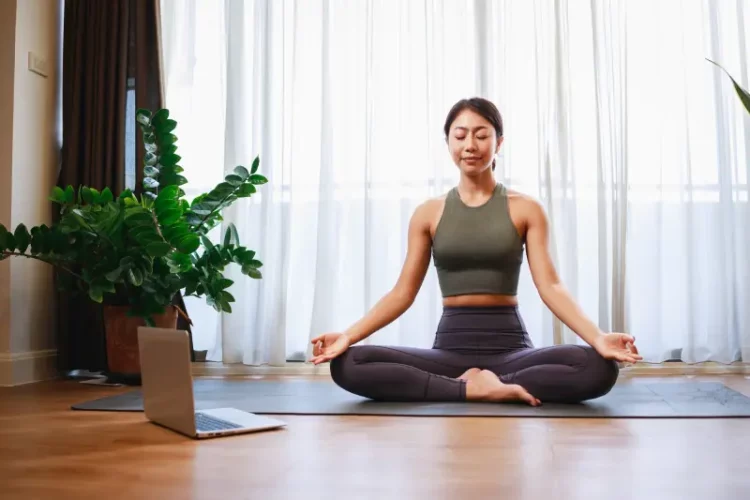In today’s fast-paced world, many people seek relief from stress through relaxation techniques. Mindfulness meditation has gained widespread popularity as a scientifically supported method to reduce stress and improve well-being. However, not all relaxation practices are created equal. Some approaches, which we can call “pseudo-relaxation,” may feel calming on the surface but don’t engage your body’s deep restorative systems in the same way true mindfulness does.
Understanding the difference between authentic mindfulness and pseudo-relaxation is crucial—because their impact on your body and mind can be vastly different. This article explores what separates genuine mindfulness practice from superficial relaxation, and why that distinction matters for your health.
What Is Mindfulness?
Mindfulness is the practice of paying purposeful, nonjudgmental attention to the present moment. It involves observing thoughts, feelings, and bodily sensations as they arise, without trying to change or suppress them.
This intentional awareness activates the brain and body in ways that promote genuine relaxation, emotional regulation, and resilience. Mindfulness is both a mental attitude and a practiced skill cultivated through meditation, breath awareness, or mindful movement.
What Is “Pseudo-Relaxation”?
“Pseudo-relaxation” refers to activities or states that mimic relaxation but do not engage your body’s core stress-relief mechanisms fully. Examples include:
- Distracting yourself with passive entertainment (e.g., mindlessly scrolling social media)
- Superficial breathing techniques that lack focus or depth
- Forced relaxation attempts where tension is merely suppressed but not resolved
- Avoiding or numbing uncomfortable emotions instead of observing them
While these may temporarily reduce tension or create a sense of calm, they do not activate the parasympathetic nervous system (PNS) effectively, which is key to true physiological relaxation.
Physiological Differences: Mindfulness vs. Pseudo-Relaxation
1. Nervous System Activation
- Mindfulness: Increases parasympathetic (rest-and-digest) activity and decreases sympathetic (fight-or-flight) response. This leads to lower heart rate, reduced blood pressure, and a calmer nervous system overall.
- Pseudo-Relaxation: May fail to shift nervous system balance meaningfully, leaving the body in a state of low-level stress or tension.
2. Heart Rate Variability (HRV)
- Mindfulness: Boosts HRV, an indicator of a healthy, adaptable cardiovascular system and resilience to stress.
- Pseudo-Relaxation: Often shows little to no improvement in HRV.
3. Hormonal Response
- Mindfulness: Reduces cortisol and adrenaline levels, hormones that drive chronic inflammation and health problems.
- Pseudo-Relaxation: Does not consistently lower stress hormone levels; in some cases, stress remains elevated.
4. Brain Activity
- Mindfulness: Enhances activity in brain regions responsible for attention, emotional regulation, and self-awareness (e.g., prefrontal cortex) and dampens the amygdala (fear center).
- Pseudo-Relaxation: Lacks this balanced brain engagement, which may leave emotional stress unresolved.

Why Does This Matter?
When relaxation techniques don’t fully engage your body’s stress-relief systems, the effects are temporary and superficial. Over time, this can lead to:
- Accumulated chronic stress
- Heightened inflammation
- Poor emotional regulation
- Increased risk of burnout and illness
True mindfulness, on the other hand, promotes long-lasting changes in the brain and body that improve health, reduce anxiety and depression, and increase resilience.
How to Tell If You’re Practicing Genuine Mindfulness
- Awareness: Are you actively observing your present experience, or just distracting yourself?
- Nonjudgment: Do you accept thoughts and feelings without trying to push them away?
- Focus: Is your attention anchored (e.g., on breath or body sensations) rather than wandering uncontrollably?
- Emotional engagement: Are you open to feeling discomfort, or do you avoid it?
If your practice involves true curiosity and acceptance rather than avoidance or distraction, you’re likely engaging in authentic mindfulness.
Tips to Move from Pseudo-Relaxation to Mindfulness
- Start with guided mindfulness meditations to build skill and structure.
- Practice breath awareness deeply, noticing inhalation and exhalation without forcing it.
- Allow yourself to experience emotions fully, observing them as passing phenomena rather than suppressing them.
- Avoid multitasking during practice; give yourself undivided attention.
- Be patient—mindfulness is a skill that strengthens with consistent practice.
Conclusion
Relaxation is not one-size-fits-all. While many techniques can provide momentary calm, mindfulness uniquely activates your body’s deep restorative processes, leading to meaningful improvements in health and well-being.
By recognizing the difference between mindfulness and pseudo-relaxation, you can shift your practice toward greater effectiveness. This shift means not just feeling relaxed but truly healing and building resilience from within—one mindful breath at a time.












































